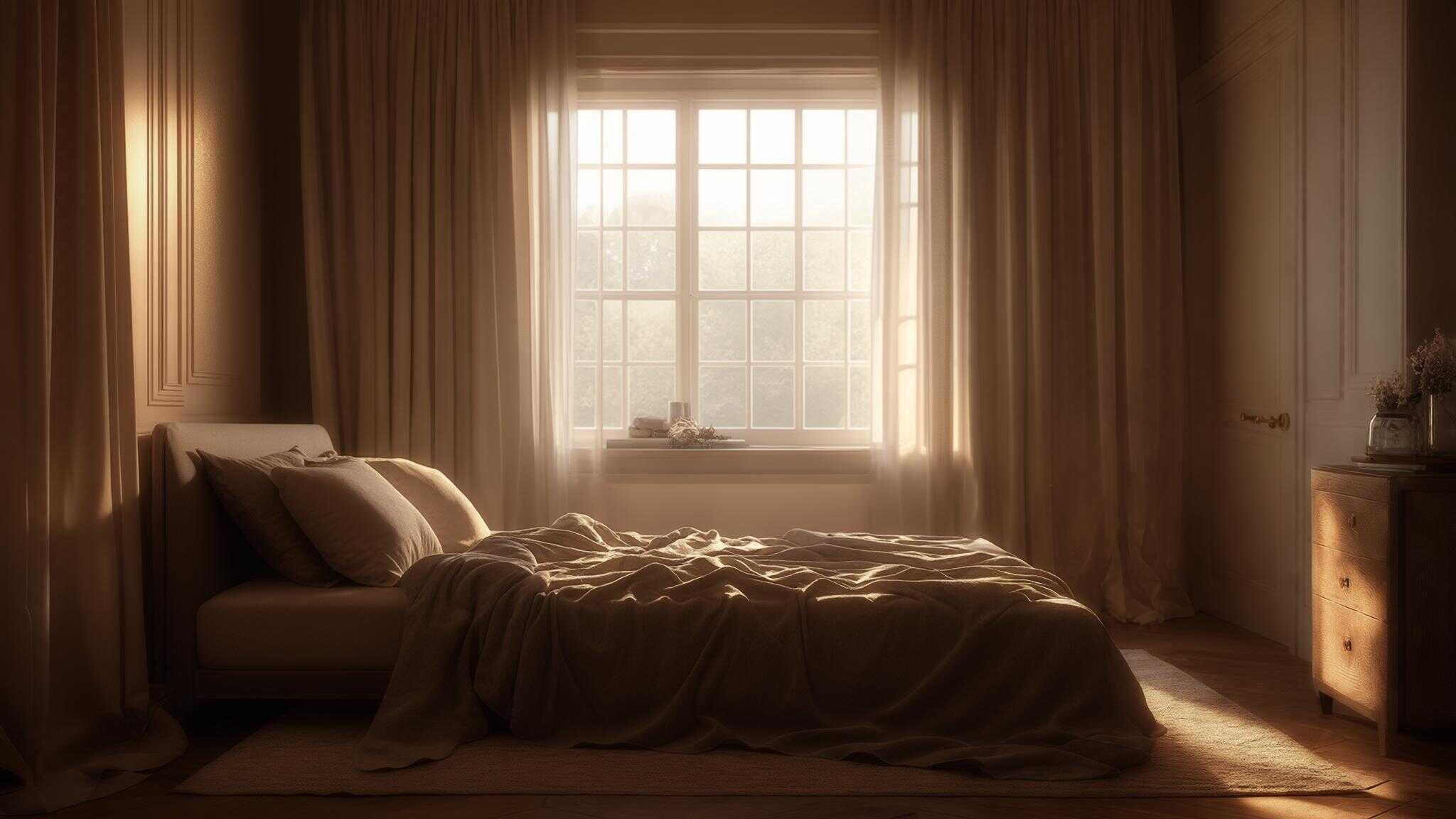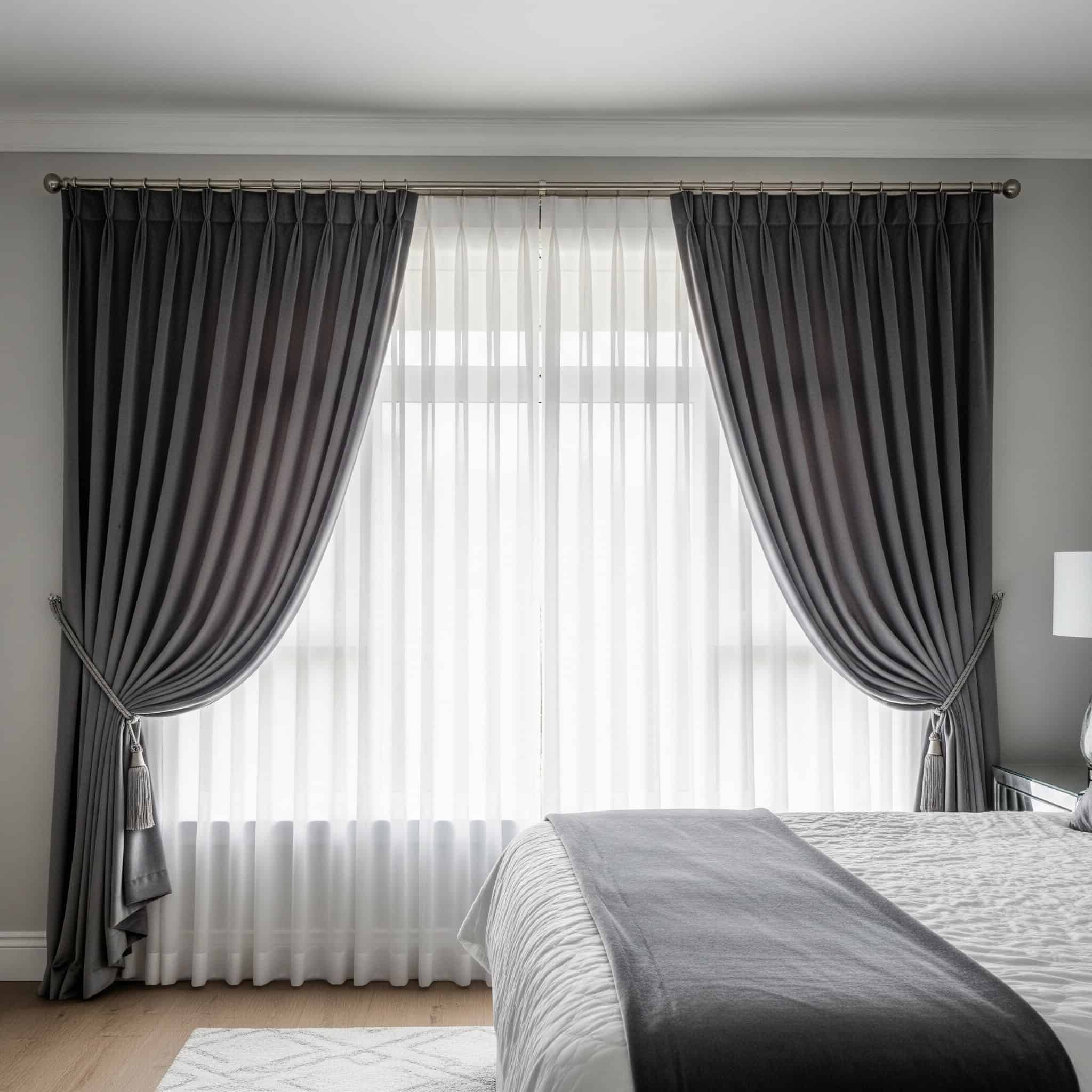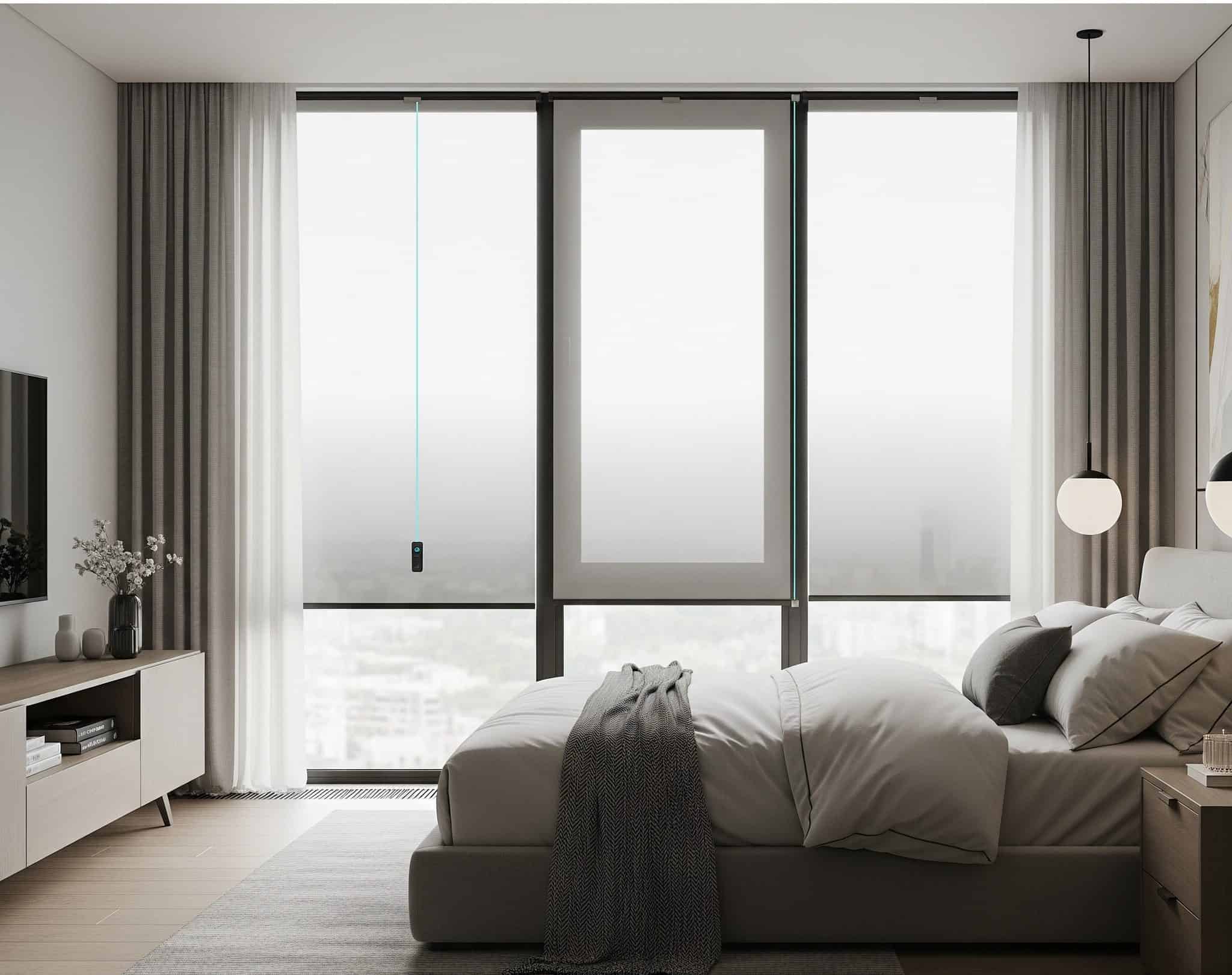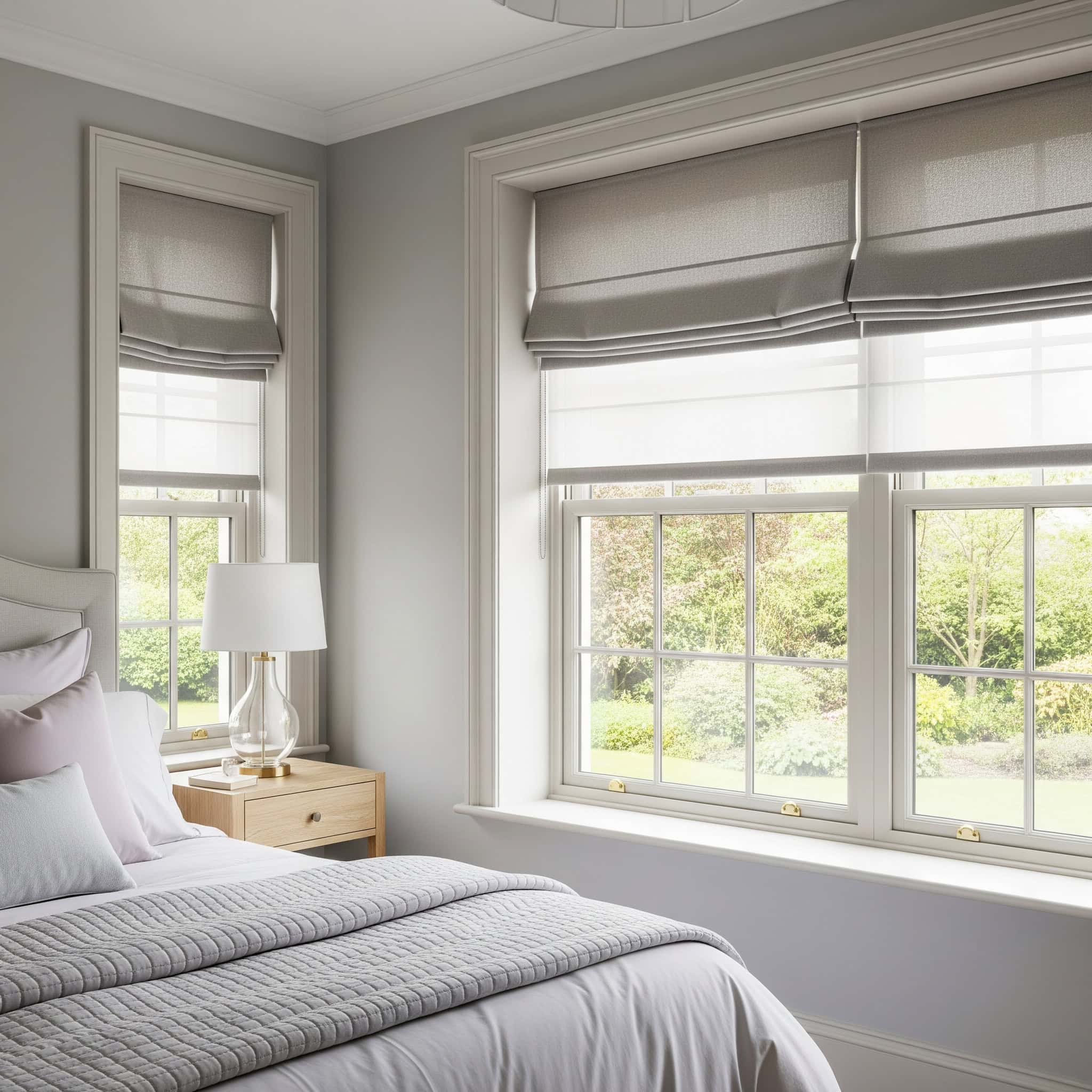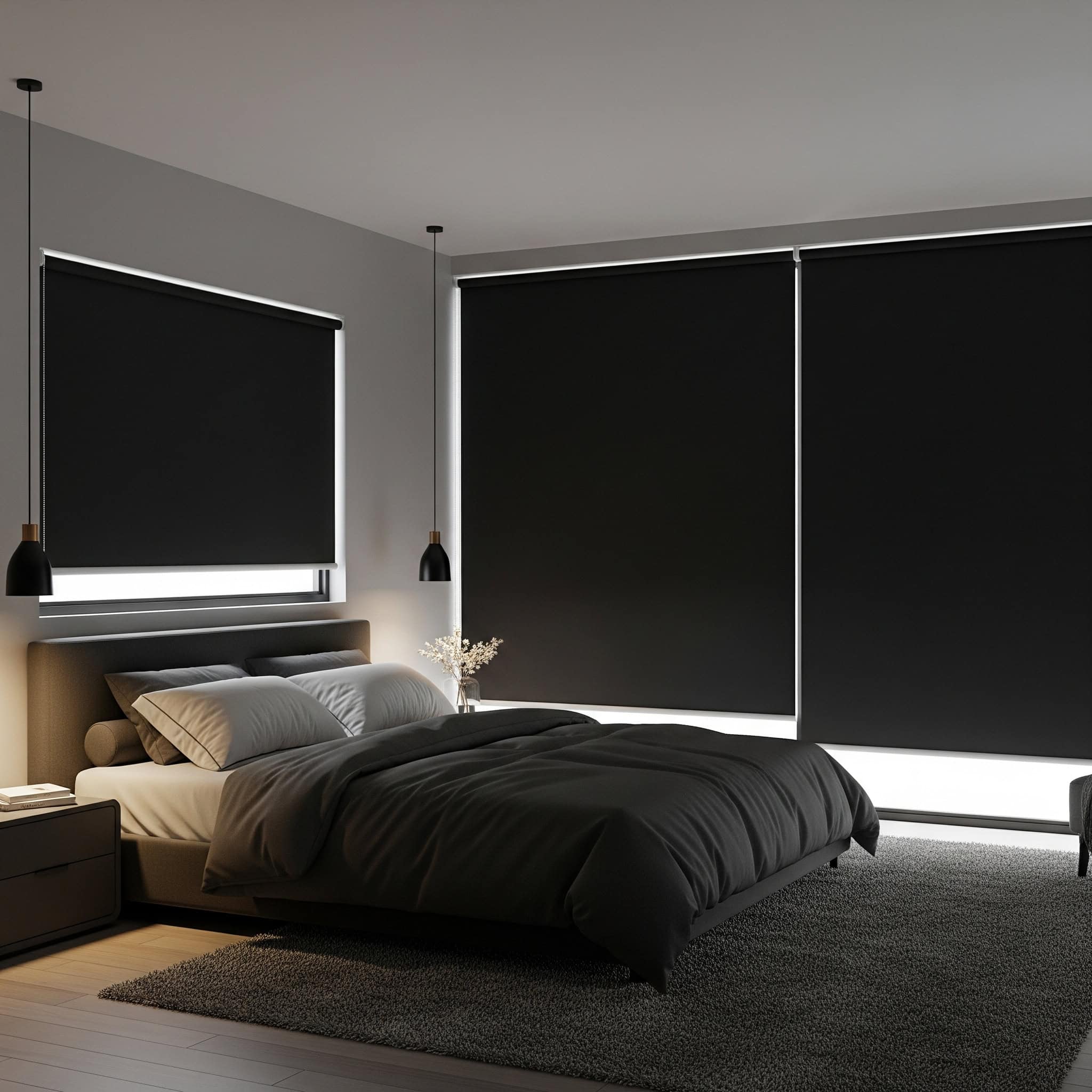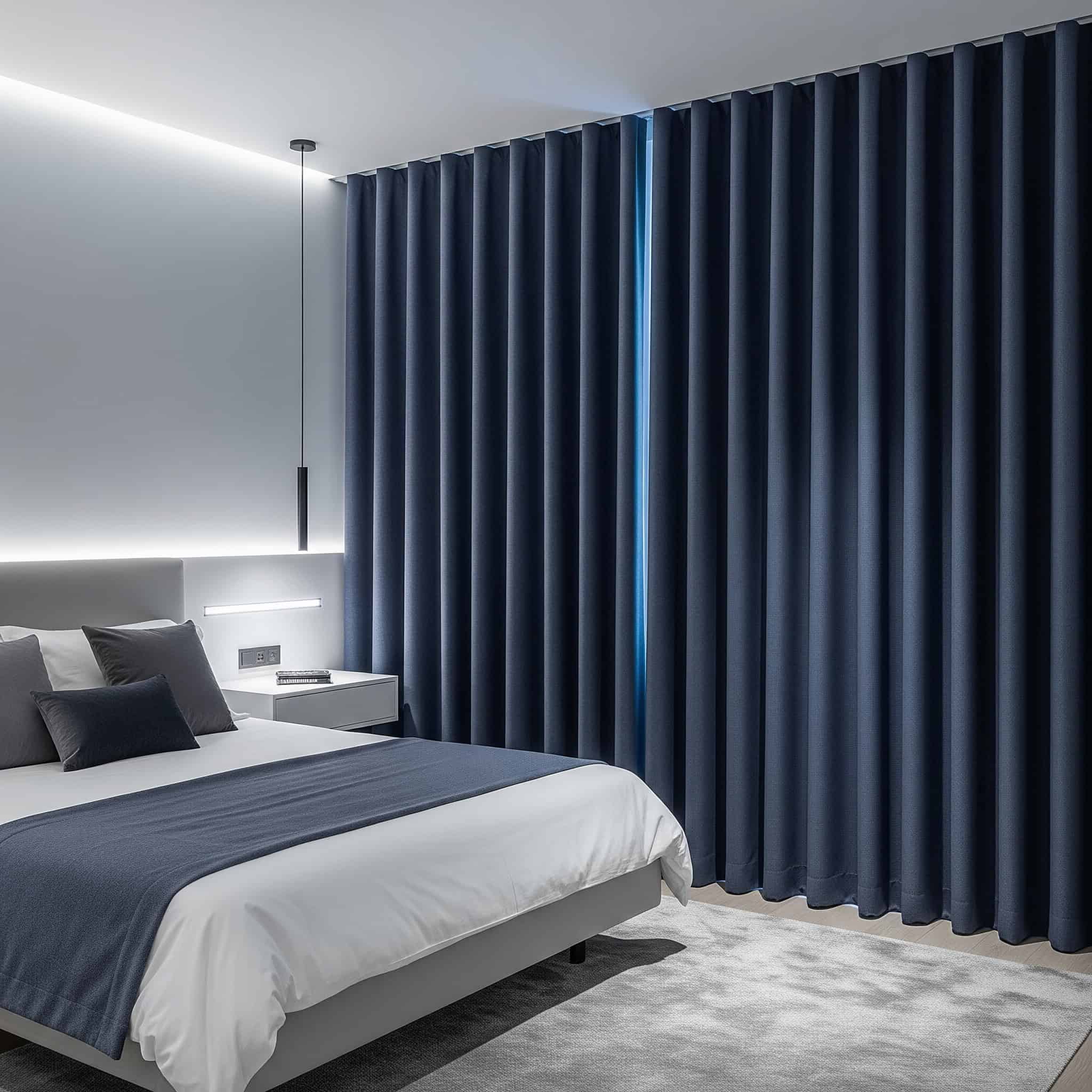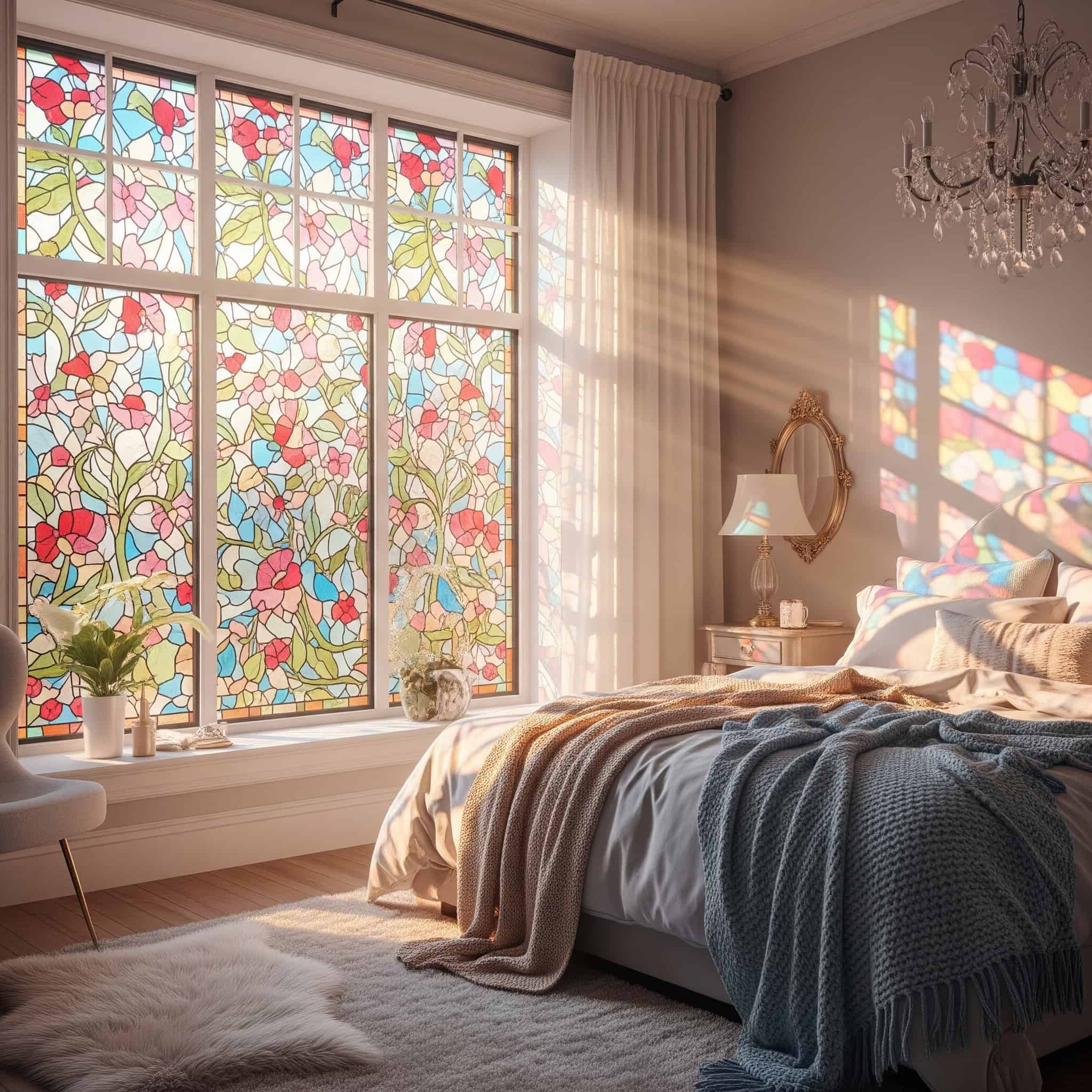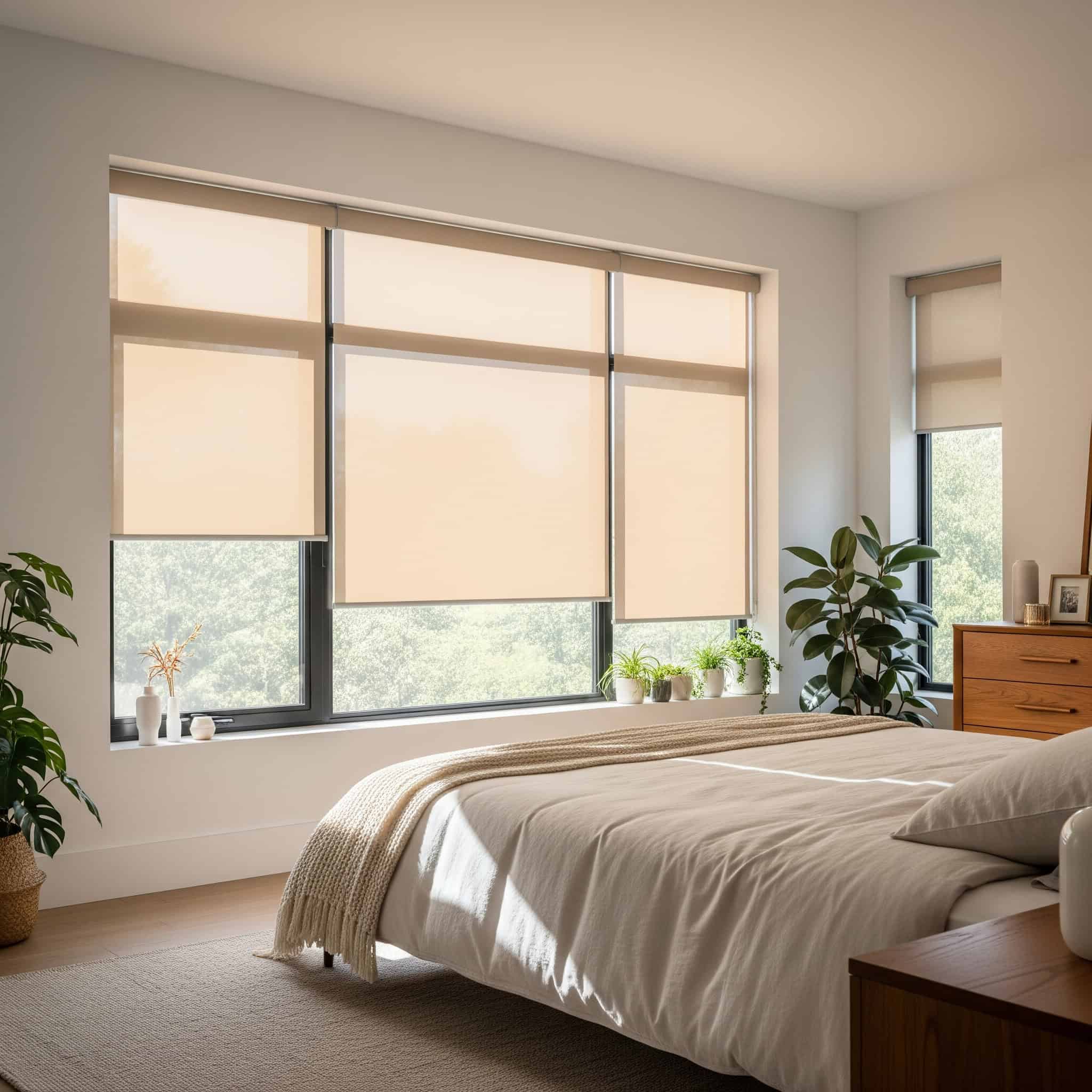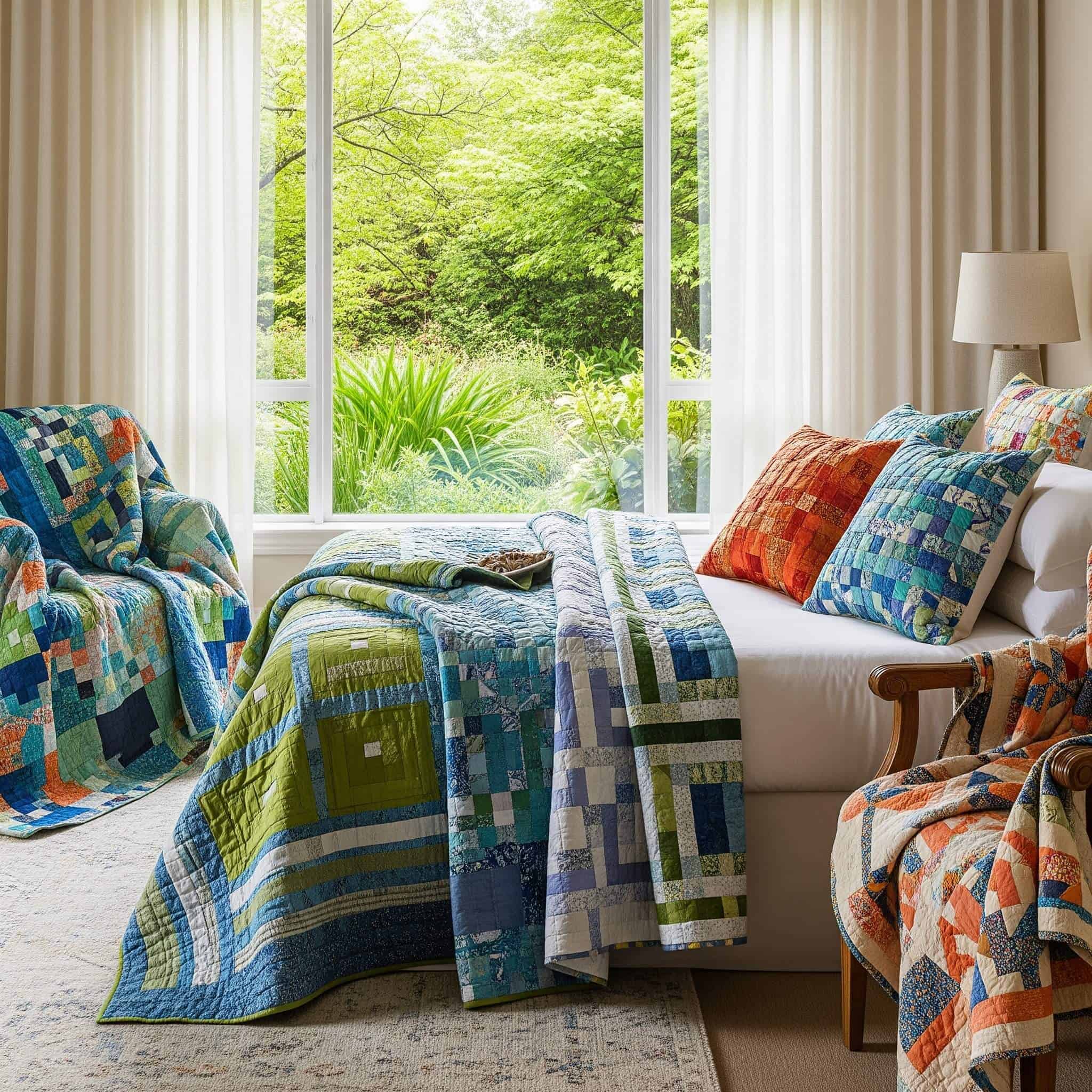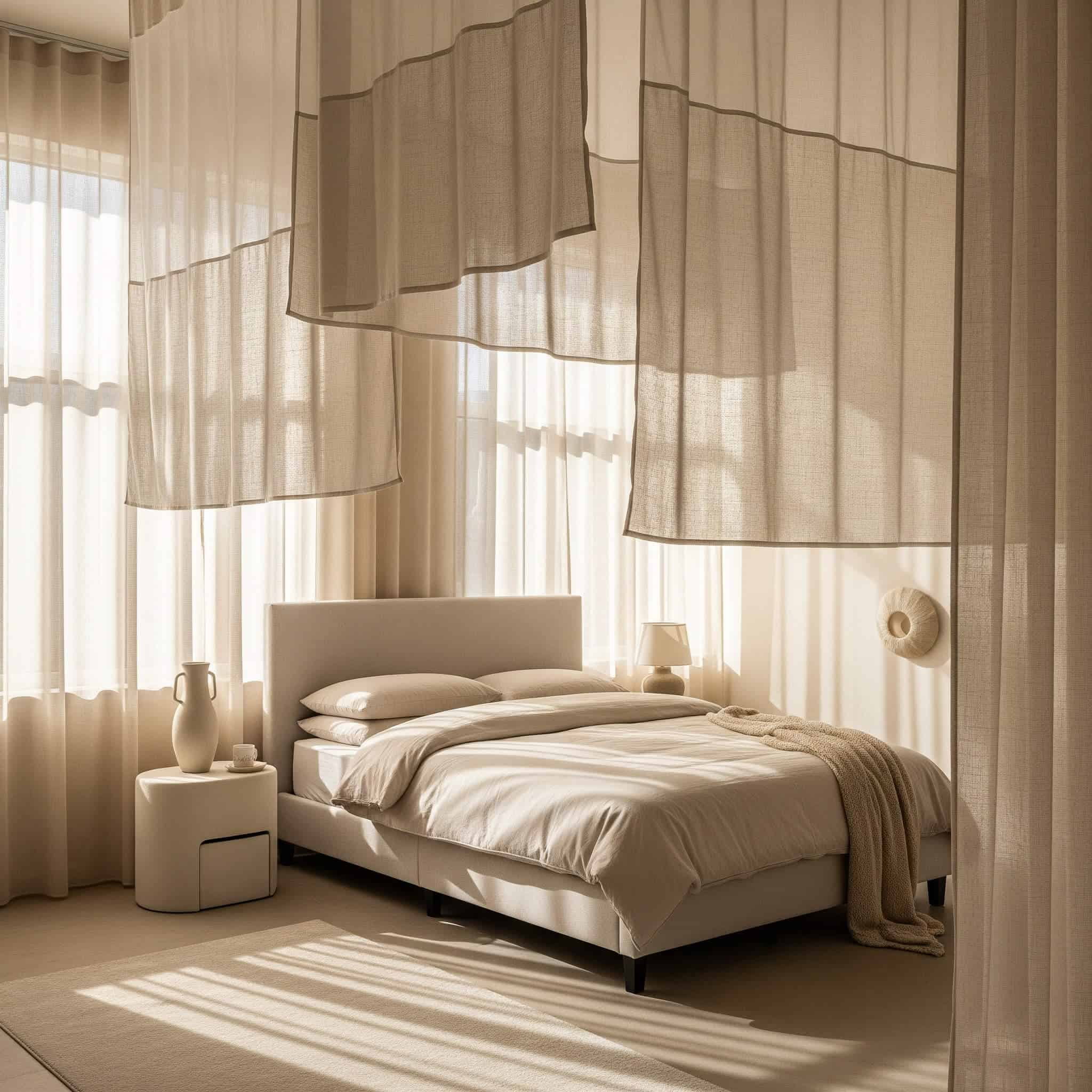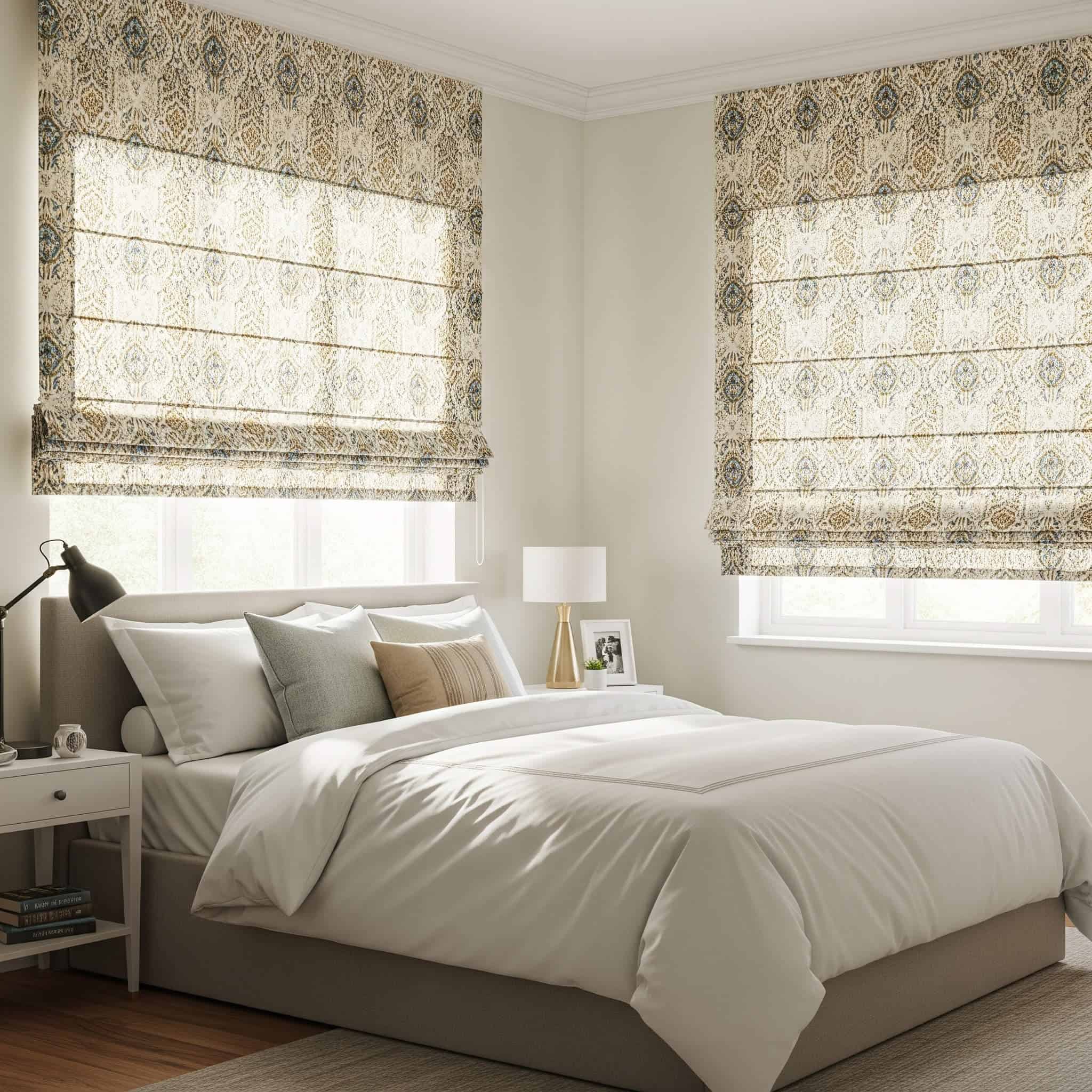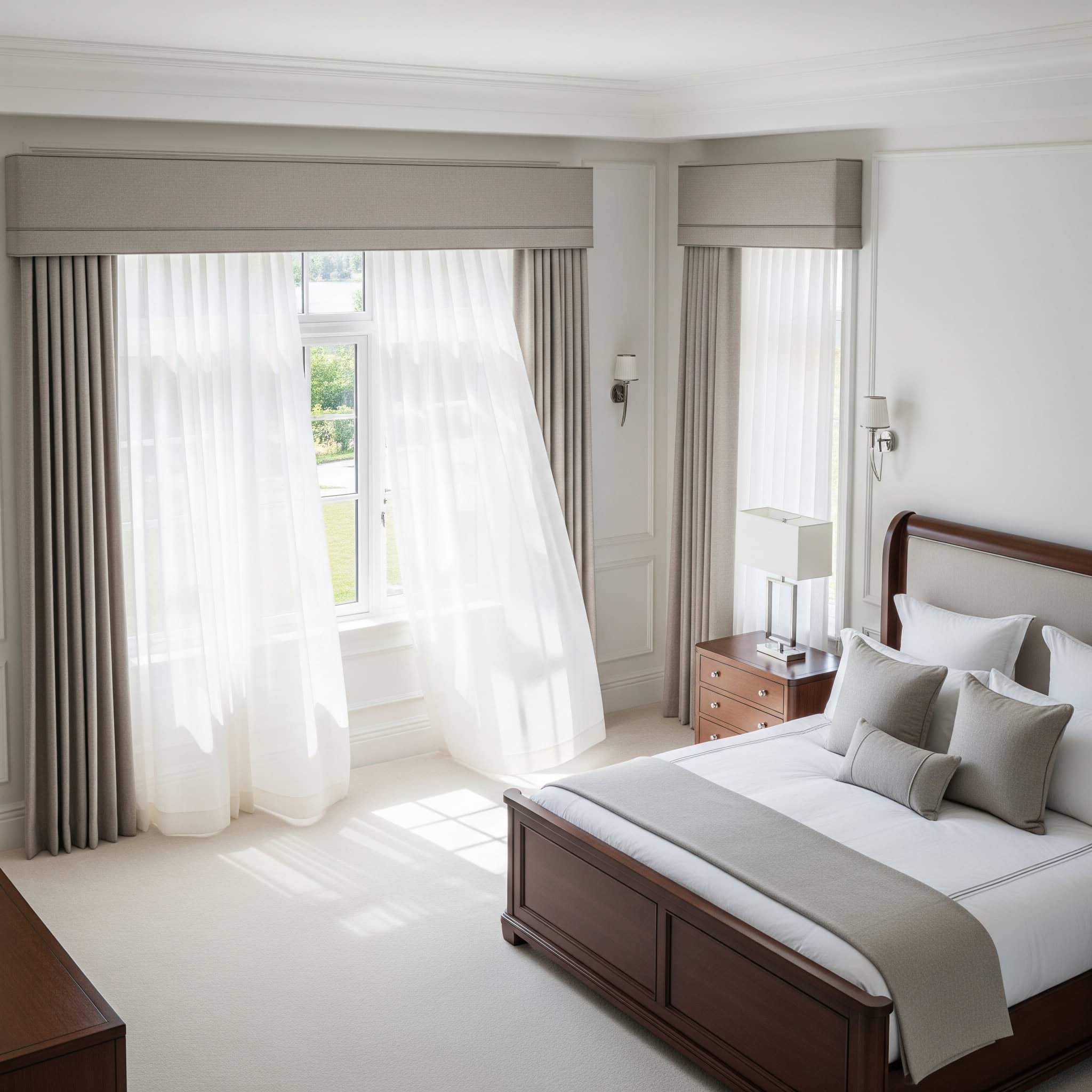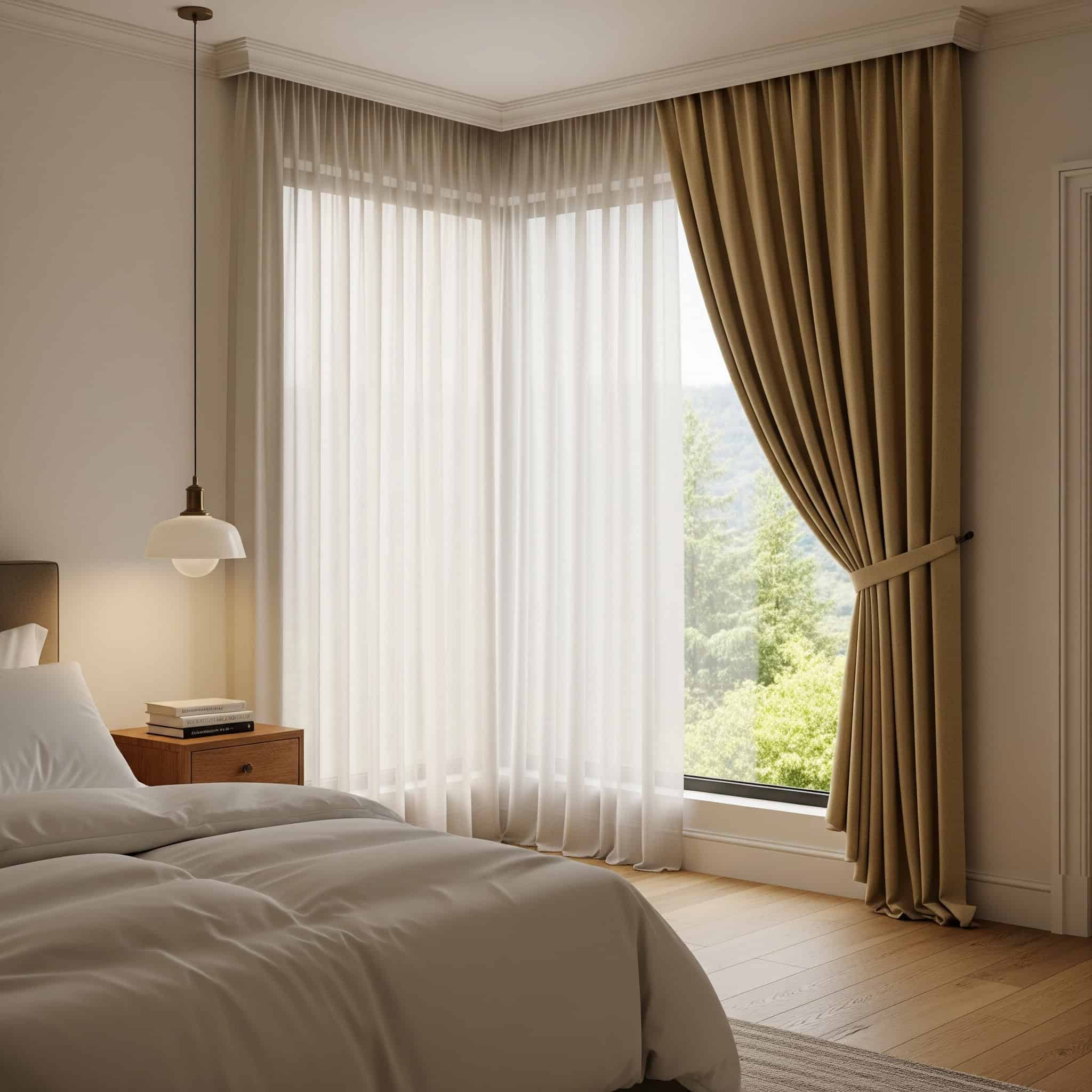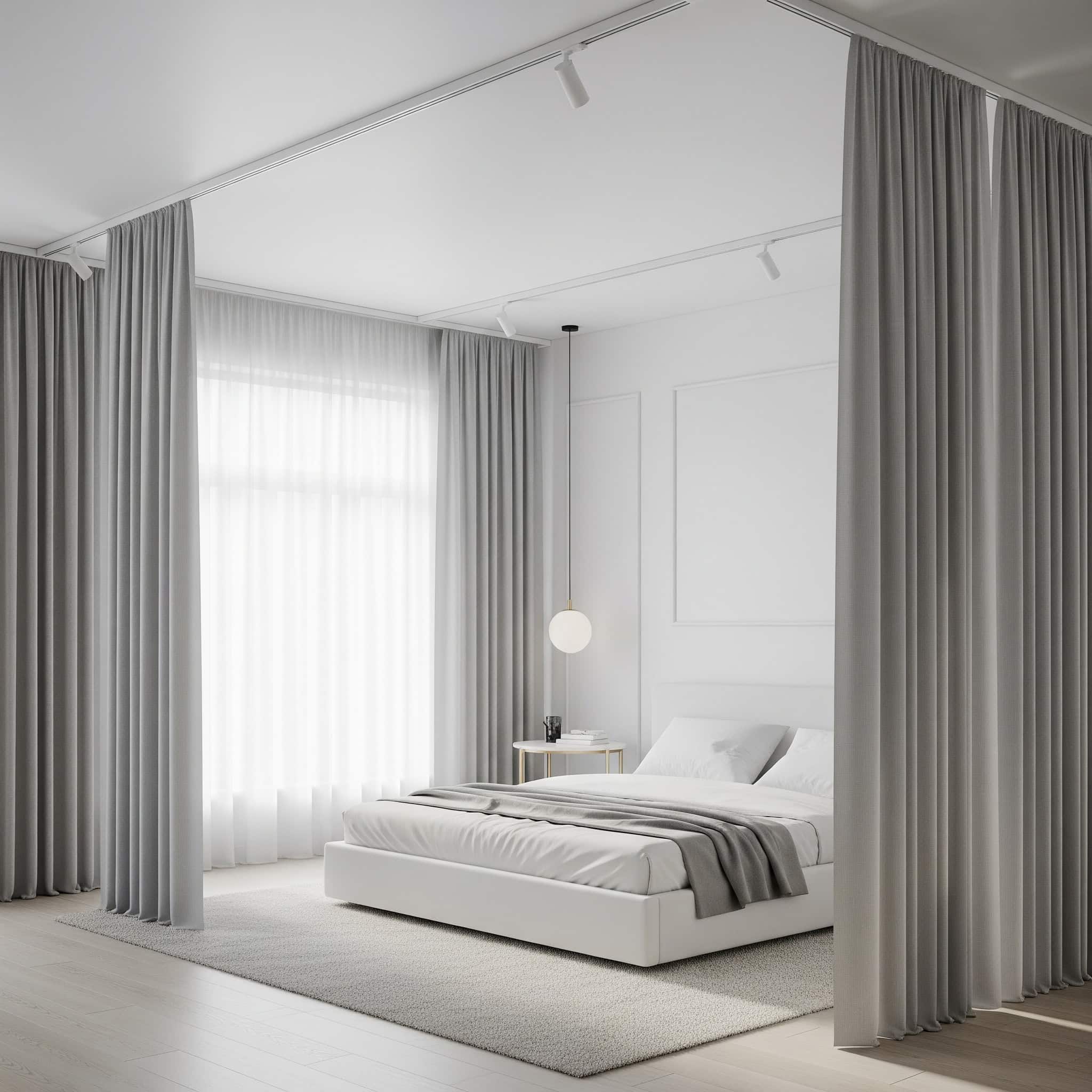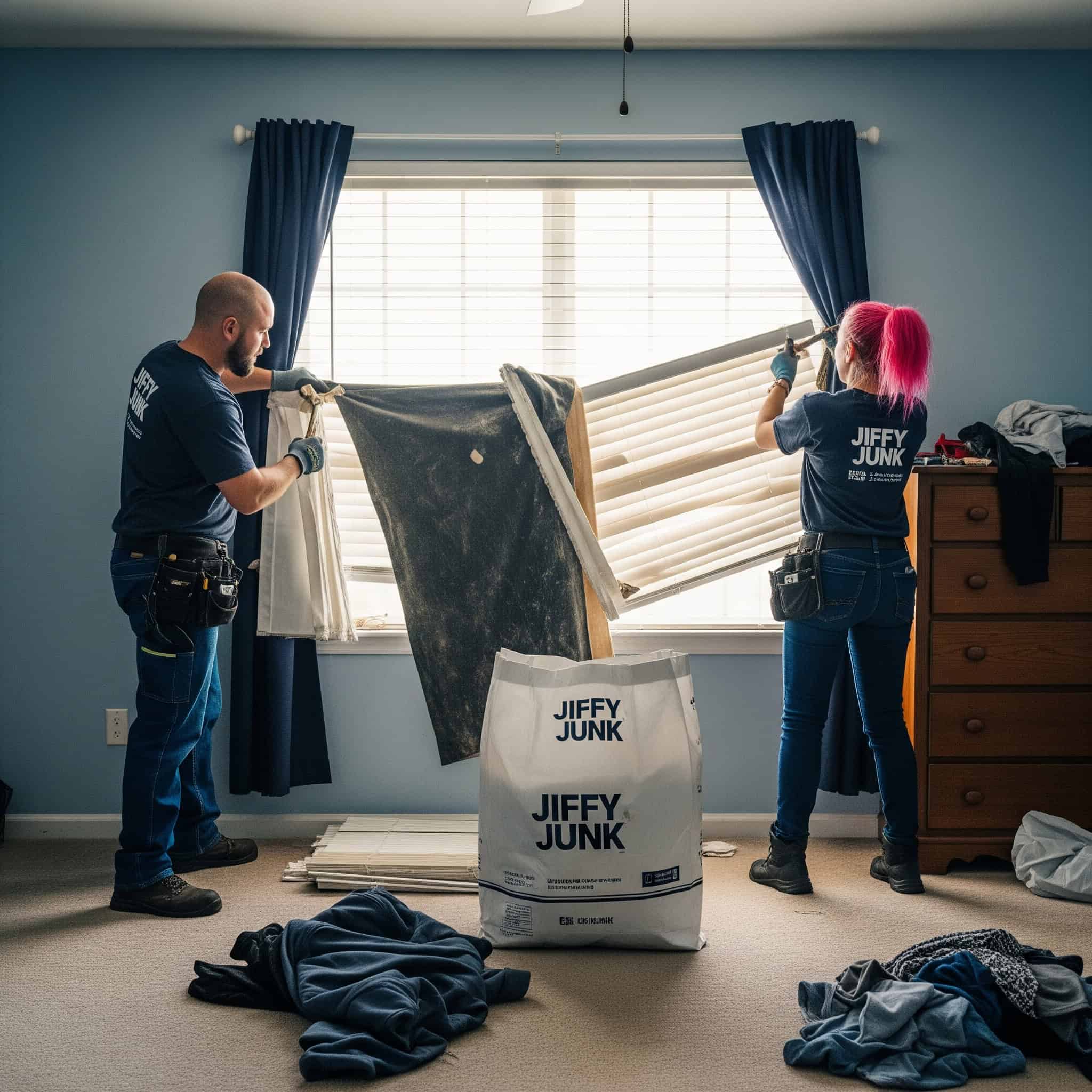25 Stunning Bedroom Window Ideas for 2025: Transform Your Space
This comprehensive guide explores the latest bedroom window trends for 2025, featuring 25 innovative ideas across five categories. From privacy solutions to energy-efficient options, you’ll discover practical and stylish ways to enhance your bedroom windows while considering functionality, aesthetics, and budget constraints.
Window treatments significantly impact both the functionality and design aesthetic of bedrooms. The right choices can potentially reduce energy costs by 10-25% according to the U.S. Department of Energy. I’ve noticed that more homeowners are investing in their bedroom windows as the market continues to grow.
The bedroom window treatment market is projected to grow by 4.8% annually through 2025. This growth is primarily driven by innovations in smart technology integration and sustainable materials that we’re seeing more frequently in modern homes.
Table of Contents
-
Understanding Bedroom Window Considerations
-
Privacy-Focused Window Treatments
-
Light Control Solutions
-
Energy-Efficient Options
-
Style-Forward Designs
-
Space-Optimizing Solutions
-
How Jiffy Junk Helps With Your Window Refresh
-
Final Thoughts
Understanding Bedroom Window Considerations
Before selecting bedroom window treatments, you need to evaluate several key factors that will influence your decision. These considerations include functionality requirements, room aesthetics, privacy needs, light control capabilities, energy efficiency, maintenance demands, budget limitations, space constraints, seasonal adaptability, and safety concerns.
Before selecting the perfect bedroom window treatments, consider how you’ll handle disposal of your old ones. Learn more about environmentally responsible options in our guide to eco-friendly trash removal services that keep materials out of landfills.
Window treatments account for approximately 15-20% of a bedroom’s visual impact. They’re not just decorative elements—they can affect room temperature variations by up to 5-8 degrees Fahrenheit, making them crucial for comfort and energy efficiency.
Professional interior designers recommend assessing window orientation (north, south, east, west) before making any decisions. The direction your bedroom window faces directly impacts light quality, heat gain, and treatment effectiveness throughout different seasons. I’ve found this assessment particularly helpful when working with clients who have specific temperature or lighting concerns.
|
Consideration Factor |
Questions to Ask |
Impact on Selection |
|---|---|---|
|
Window Orientation |
Which direction does your bedroom window face? |
Affects light intensity, heat gain, and privacy needs |
|
Room Function |
Is this a primary bedroom, guest room, or dual-purpose space? |
Determines priority of light blocking vs. aesthetics |
|
Architectural Style |
What is your home’s design aesthetic? |
Guides material and treatment style choices |
|
Budget Constraints |
What is your investment range per window? |
Narrows options from basic to premium solutions |
|
Maintenance Willingness |
How much upkeep are you prepared to manage? |
Influences durability and cleaning requirements |
Privacy-Focused Window Treatments
1. Cellular/Honeycomb Shades
Cellular shades feature a distinctive honeycomb structure that provides excellent privacy while still allowing natural light to filter through. The cordless top-down/bottom-up functionality gives you precise control over privacy levels, making these shades particularly versatile for bedroom windows facing busy streets or neighboring properties.
The unique honeycomb structure creates air pockets that provide insulation, improving energy efficiency with R-values ranging from 2.0 to 5.0 depending on cell size and layering. I’ve installed these in several bedroom windows and noticed immediate improvements in both privacy and temperature regulation.
Top-down/bottom-up mechanisms utilize a dual rail system that allows independent movement of both the top and bottom portions. This creates customizable privacy zones that can be adjusted throughout the day as the sun moves across your bedroom window.
2. Smart Privacy Glass
Smart privacy glass represents cutting-edge technology for bedroom windows, allowing you to switch from transparent to opaque with the touch of a button or smartphone app. This eliminates the need for traditional window coverings while providing instant privacy when needed, perfect for modern, minimalist bedrooms.
A master bedroom in a modern urban apartment utilized smart privacy glass for its floor-to-ceiling windows facing an adjacent building. The homeowners programmed the glass to automatically switch to opaque at 9 PM each evening and gradually transition to transparent at 7 AM, creating a natural wake-up experience while maintaining complete nighttime privacy. The system was also connected to their smart home hub, allowing voice commands to instantly adjust privacy levels when needed throughout the day.
Smart glass utilizes polymer dispersed liquid crystal (PDLC) technology that aligns particles when electricity is applied, changing from opaque to transparent in milliseconds. The technology has become more accessible for residential bedroom window ideas, though it still represents a premium option.
Installation requires professional electrical work with most systems operating on 65-120 volts AC and consuming approximately 3-5 watts per square foot when in transparent mode. While the initial investment is higher than traditional bedroom window ideas, the convenience and modern aesthetic often justify the cost for tech-forward homeowners.
3. Layered Window Treatments
Layering window treatments gives you ultimate flexibility in controlling privacy and light. By combining sheer curtains with blackout drapes on dual rods, you can adjust your bedroom’s privacy levels throughout the day while creating visual depth and texture that enhances your overall design scheme.
Dual rod systems typically require 3-5 inches of wall depth for proper installation, with the front rod extending 2-4 inches further than the back rod for optimal functionality. I’ve found this setup particularly effective for bedroom windows that face different lighting conditions throughout the day.
Professional designers recommend a minimum of 2.5x fabric fullness (width of curtain compared to window width) for proper draping and maximum privacy effectiveness. This extra fabric ensures complete coverage when the curtains are closed, preventing any gaps that might compromise your privacy.
4. Roman Shades with Privacy Liners
Roman shades with privacy liners offer a sophisticated solution that combines elegant fabric styling with practical light-blocking capabilities. These shades fold into neat horizontal pleats when raised and create a smooth, tailored appearance when lowered, making them suitable for both traditional and contemporary bedroom designs.
Privacy liners are typically constructed from tightly woven polyester or cotton blends with opacity ratings of 80-100%. These materials effectively block up to 99% of light when fully closed, creating a perfect environment for your bedroom window when complete darkness is desired.
The cord mechanisms in quality Roman shades utilize a clutch system with a 4:1 or 5:1 gear ratio. This engineering detail allows smooth operation even with heavier fabrics and liners, ensuring your bedroom window treatments function flawlessly for years to come.
5. Plantation Shutters
Plantation shutters provide timeless appeal with excellent privacy control through adjustable louvers. Their solid construction and clean lines work well in various bedroom styles, from coastal to traditional. While the initial investment is higher than some alternatives, plantation shutters add permanent value to your home and require minimal maintenance.
Quality plantation shutters are constructed from either hardwoods (basswood, poplar) or composite materials with hollow or solid cores. The material choice affects both weight and insulation properties, with solid core options providing better temperature regulation for your bedroom windows.
Louver sizes typically range from 2.5″ to 4.5″ with larger louvers providing better views when open but requiring more clearance space when tilted. I typically recommend 3.5″ louvers for most bedroom windows as they balance visibility and functionality beautifully.
Light Control Solutions
6. Blackout Roller Shades
Blackout roller shades offer superior light-blocking capabilities in a clean, streamlined design. Motorized options allow you to control light levels without leaving your bed, making these shades particularly beneficial for shift workers or anyone sensitive to morning light. Their simple design complements modern bedroom aesthetics.
True blackout roller fabrics contain multiple layers including a light-blocking core and decorative facing. These specialized materials achieve 99-100% light blockage with proper side channel installation, creating a perfect sleep environment for your bedroom window treatment ideas.
Motorized systems operate via radio frequency (RF) at 433 MHz or Wi-Fi at 2.4 GHz, with battery-powered options typically lasting 6-12 months depending on usage frequency. The convenience of controlling your bedroom window treatments from your phone or voice assistant has made these increasingly popular for primary bedrooms.
7. Day-Night Cellular Shades
Day-night cellular shades feature alternating sheer and opaque bands that can be adjusted to control light levels throughout the day. This innovative design allows you to maintain privacy while still enjoying filtered natural light, or completely block light when needed for sleeping or screen viewing.
|
Light Control Option |
Light Blocking % |
Privacy Level |
Cost Range |
Ease of Installation |
|---|---|---|---|---|
|
Blackout Roller Shades |
95-100% |
High |
$40-$200 |
Easy-Moderate |
|
Day-Night Cellular Shades |
20-95% (adjustable) |
Medium-High |
$60-$250 |
Moderate |
|
Light-Redirecting Blinds |
60-75% |
Medium |
$75-$300 |
Moderate |
|
Automated Curtain Systems |
80-99% (with liners) |
High |
$150-$800 |
Complex |
|
Stained Glass Film |
40-60% |
Low-Medium |
$20-$100 |
Easy |
The dual-layer construction combines light-filtering bands (typically 10-20% opacity) with room-darkening bands (95-99% opacity) in alternating horizontal sections typically 2-3 inches in height. This design gives you unprecedented control over the light entering through your bedroom window.
The operating mechanism uses a continuous loop pulley system with a 1:1 ratio that allows precise positioning of the alternating bands relative to each other. I’ve installed these in several bedroom window ideas projects where clients wanted flexibility without sacrificing style.
8. Light-Redirecting Blinds
Light-redirecting blinds feature specialized slats designed to bounce natural light toward your ceiling, reducing glare while maximizing daylight distribution. This technology transforms harsh direct sunlight into soft, ambient illumination that enhances your bedroom’s atmosphere without sacrificing privacy.
The specialized slats incorporate micro-prisms or curved surfaces that redirect up to 80% of incoming light toward the ceiling. This clever design extends daylight penetration by 8-10 feet deeper into the room, making them perfect for bedroom windows that don’t receive optimal natural light.
Advanced models feature dual-sided slats with different reflective properties on each side, optimized for seasonal sun angles with summer/winter settings. This adaptability makes them particularly valuable for bedroom windows that face harsh afternoon sun in summer months.
9. Automated Curtain Systems
Automated curtain systems bring convenience and precision to light management with programmable schedules and remote operation. You can set your bedroom curtains to open gradually in the morning for a natural wake-up experience or close automatically at sunset for privacy, all without manual adjustment.
When upgrading to automated window treatments, proper disposal of old electronic components is essential. Learn about responsible electronics recycling options to ensure your bedroom window upgrade remains environmentally friendly from start to finish.
Smart curtain motors generate 1.1-2.0 Nm of torque, sufficient to move curtains weighing up to 60kg across tracks spanning up to 12 meters with precision stopping points. This power ensures reliable operation even for large bedroom windows with heavy drapery.
Integration capabilities include API connections to major smart home systems (HomeKit, Google Home, Alexa) with IFTTT programming. These connections allow curtain movements to trigger or respond to other connected devices, creating a truly integrated bedroom window experience that enhances both comfort and convenience.
10. Stained Glass Window Film
Stained glass window film offers a decorative approach to light filtering with colorful patterns that create dynamic light effects in your bedroom. This affordable DIY option provides moderate privacy while transforming ordinary windows into artistic focal points that enhance your personal style.
High-quality window films use polyester substrates with UV-resistant dyes that maintain color stability for 5-7 years without fading. These films block 95-99% of harmful UV rays while creating beautiful colored light patterns across your bedroom.
Application requires precise measurement and wet installation using a solution of mild soap and water (typically 3-5 drops per liter). This solution allows positioning before permanent adhesion, making it possible to achieve professional results even as a DIY project for your bedroom windows.
Energy-Efficient Options
11. Thermal Curtains
Thermal curtains combine practical energy efficiency with luxurious textures and appearance. Their specialized lining helps maintain consistent bedroom temperatures by preventing heat loss in winter and blocking solar heat in summer, potentially reducing your energy bills while enhancing your sleep environment.
A homeowner in Minnesota installed thermal curtains in their north-facing bedroom and documented temperature differences before and after installation. Using a digital thermometer, they recorded that the room maintained temperatures 6-8°F warmer during winter nights with the thermal curtains closed compared to their previous standard curtains. Their smart thermostat data showed a 15% reduction in heating costs for that zone of the house during the winter months, with the investment in thermal curtains paying for itself within the first heating season.
Multi-layer construction typically includes a decorative front layer, insulating middle layer with thermal batting (R-value 3-5), and reflective vapor barrier backing. This specialized construction prevents up to 25% of heat transfer through your bedroom window, creating significant energy savings over time.
Proper installation requires curtains to extend 3-4 inches beyond window frame on all sides with ceiling-to-floor length. This comprehensive coverage effectively traps air and creates an insulating barrier that maximizes the energy efficiency of your bedroom window designs.
12. Solar Shades
Solar shades are specifically designed to reduce heat and glare while maintaining your view to the outdoors. Available in various openness factors, these shades allow you to customize the balance between visibility, UV protection, and heat reduction for optimal bedroom comfort throughout the day.
Openness factors range from 1% (maximum UV protection, minimal visibility) to 14% (maximum visibility, moderate UV protection). Each percentage point significantly affects both heat rejection and outward visibility, allowing you to tailor the solution to your specific bedroom window needs.
Performance fabrics block 75-99% of UV rays while reducing solar heat gain coefficient (SHGC) by 0.35-0.75 points. This technical improvement can potentially lower cooling costs by 15-30% in south-facing bedrooms, making solar shades both practical and economical for many homeowners.
13. Insulated Cellular Shades
Insulated cellular shades with side tracks offer superior energy efficiency by creating a sealed barrier against your window. Their honeycomb structure traps air to provide insulation, while side channels prevent drafts from seeping around the edges, making these shades particularly effective in extreme climates.
Triple-cell construction creates multiple air pockets that achieve R-values of 4.0-7.0. This insulation performance is comparable to adding an extra pane of glass to your window’s insulation properties, making these shades one of the most effective bedroom window ideas for energy conservation.
Side track systems use aluminum channels with brush seals that reduce air infiltration by up to 45% compared to standard installations. The measurable draft reduction of 98-99% creates a noticeable improvement in comfort, especially for bedroom windows in older homes that might have air leakage issues.
14. Window Quilts
Window quilts combine decorative fabric with thermal batting to create highly effective insulation that can be rolled down and sealed against your window frame. These customizable treatments allow you to incorporate personal style while significantly improving your bedroom’s thermal performance during cold weather.
After installing energy-efficient window treatments, you may need to dispose of old curtains and blinds. For a hassle-free solution, explore our furniture removal guide which also covers proper disposal of window treatments and other household items.
Construction typically includes 4-7 layers: decorative fabric, batting (R-value 3.5-4.5), vapor barrier, reflective layer, and backing fabric. This comprehensive structure creates a total R-value addition of 5-7 when properly sealed, dramatically improving your bedroom window’s thermal performance.
Edge sealing mechanisms use magnetic strips, hook-and-loop fasteners, or compression channels that create an airtight seal. These specialized closures reduce convective heat loss by up to 80% compared to standard curtains, making window quilts particularly effective for bedroom windows in colder climates.
15. Low-E Glass Window Replacements
Low-E glass window replacements represent a permanent solution for energy efficiency by incorporating a specialized coating that reflects infrared light. While requiring significant initial investment, these windows provide long-term benefits through reduced energy costs, improved comfort, and enhanced UV protection for your bedroom furnishings.
|
Energy Efficiency Option |
R-Value |
Annual Energy Savings |
Lifespan |
Installation Complexity |
|---|---|---|---|---|
|
Thermal Curtains |
3-5 |
10-15% |
5-7 years |
DIY |
|
Solar Shades |
1.5-3 |
15-30% (cooling) |
7-10 years |
DIY/Professional |
|
Insulated Cellular Shades |
4-7 |
20-30% |
7-10 years |
DIY/Professional |
|
Window Quilts |
5-7 |
25-35% |
5-8 years |
DIY |
|
Low-E Glass Replacements |
3-5 (total) |
30-40% |
15-30 years |
Professional Only |
Low-E coatings consist of microscopic metal or metallic oxide layers just 3 nanometers thick. These specialized coatings selectively filter wavelengths, allowing visible light while reflecting 40-70% of infrared heat energy, creating a more comfortable environment around your bedroom window.
Double-pane Low-E windows typically achieve U-factors of 0.25-0.35 (lower is better) compared to 0.85-1.0 for single-pane windows. Argon gas fills further improve performance by 5-15%, making these windows the most comprehensive energy solution for bedroom windows in any climate zone.
Style-Forward Designs
16. Sheer Drapery Layers
Multiple layers of lightweight, flowing fabrics create a soft, romantic atmosphere in your bedroom while diffusing harsh light into a gentle glow. By selecting complementary colors and textures, you can develop visual depth that enhances your overall design scheme while maintaining a light, airy feeling.
Optimal sheerness is measured in denier or thread count, with 15-30 denier providing the ideal balance of light diffusion. These carefully selected fabrics filter 25-40% of direct light while maintaining translucency, creating a beautiful effect for bedroom window ideas that prioritize aesthetics.
Professional installation typically uses ripplefold heading systems with 80-100% fullness ratios. This specialized hardware creates consistent, flowing waves that maintain their form even with lightweight fabrics, ensuring your bedroom window ideas look professionally executed.
17. Natural Woven Wood Shades
Woven wood shades bring organic texture and warmth to your bedroom with materials like bamboo, reed, or jute. These natural elements create visual interest while filtering light in a distinctive pattern that adds character to your space, working particularly well in bohemian, coastal, or nature-inspired bedroom designs.
Natural materials are typically harvested, dried for 2-4 weeks, and hand-woven using techniques that create varying densities. These traditional methods affect both light filtration (20-60%) and material longevity, giving each bedroom window covering unique characteristics that can’t be replicated with synthetic materials.
Privacy liners are constructed from acrylic-coated polyester that blocks 95-99% of visibility. These liners add minimal thickness (0.5-1mm) to maintain the natural draping properties of the woven material while providing the privacy needed for bedroom windows.
18. Patterned Roman Shades
Custom roman shades featuring bold geometric prints or subtle botanical patterns serve as functional art for your bedroom windows. These fabric treatments fold into neat horizontal pleats when raised and create a smooth canvas for your chosen pattern when lowered, allowing you to introduce color and design to your window space.
Pattern repeat dimensions (typically 6-27 inches vertical and 13-54 inches horizontal) must be precisely calculated during fabrication. This careful planning ensures pattern alignment across multiple shades, creating a cohesive look for all bedroom windows in the space.
Construction techniques include flat, hobbled, or relaxed styles, each requiring different fabric allowances (10-25% additional material). These variations also need specific internal support structures to maintain proper form when raised, affecting both the appearance and functionality of your bedroom window treatments.
19. Color-Blocked Curtains
Color-blocked curtains feature horizontal bands of complementary colors that create visual interest and can visually alter your bedroom’s proportions. This contemporary design approach allows you to incorporate multiple colors from your palette in a structured, intentional way that adds sophistication to your window treatments.
An interior designer working with a client’s small bedroom with low ceilings used color-blocked curtains to create the illusion of height. The designer selected floor-to-ceiling curtains with three horizontal bands: a dark navy at the bottom (18 inches), a medium blue in the middle (the largest section at 60 inches), and a pale sky blue at the top (12 inches). This gradient effect drew the eye upward, making the 8-foot ceiling appear taller. The client reported that the room not only felt more spacious but that the color-blocking technique allowed them to incorporate all three blue tones from their bedroom color scheme in a cohesive way.
Professional color blocking requires precise pattern matching at seams with specialized sewing techniques. These methods include flat-felled or French seams (0.25-0.5 inches) to prevent light leakage while creating a polished finish for your bedroom window ideas.
Fabric selection typically combines materials with identical weight (typically 7-12 oz/yd²) but different compositions. This careful matching achieves color variation while maintaining consistent draping properties, ensuring your color-blocked curtains hang beautifully.
20. Cornice Boxes with Coordinating Treatments
Upholstered cornice boxes add architectural interest to your bedroom windows while concealing hardware and creating a polished, finished look. When paired with complementary shades or curtains beneath, these structured elements frame your windows and elevate the overall sophistication of your bedroom design.
Construction utilizes a wooden frame (typically 0.75″ plywood) with 1-2″ foam padding and fabric covering. These cornices typically project 4-8 inches from the wall and extend 3-4 inches beyond window frame width, creating proportional framing for your bedroom window.
Professional installation requires secure mounting to wall studs or blocking using cleats capable of supporting 15-25 pounds per linear foot. Precise leveling is critical for visual alignment, especially when multiple bedroom windows are being treated with matching cornices.
Space-Optimizing Solutions
21. Bay Window Seating
Custom window seats transform bay windows into functional nooks that maximize your bedroom’s usable space. By incorporating storage underneath and adding coordinating cushions and window treatments above, you create a cozy reading retreat that serves multiple purposes while enhancing your bedroom’s character.
When creating a bay window seating area, you may need to remove old furniture to make space. For a stress-free experience, check out our guide on how to get rid of old furniture on Long Island and beyond, which provides practical solutions for furniture removal during your bedroom window renovation.
Structural requirements include support brackets capable of bearing 250-500 pounds of distributed weight. These brackets are typically installed every 16-24 inches along the base with proper anchoring to floor joists, ensuring your bedroom window seat is both beautiful and structurally sound.
Ventilation considerations for under-seat storage require 0.5-1 inch gaps or mesh-covered openings. These ventilation points should total 1-2 square inches per cubic foot of enclosed space to prevent moisture accumulation that could damage both the structure and items stored beneath your bedroom window seat.
22. Corner Window Treatments
L-shaped curtain rods with flowing drapes create a dramatic framing effect for corner windows, maximizing light from multiple angles while maintaining a cohesive look. This approach celebrates unique architectural features while providing flexible privacy and light control for bedrooms with panoramic views.
Custom corner connectors accommodate angles ranging from 45-135 degrees with internal support mechanisms. These specialized components prevent sagging at the junction point where weight stress is concentrated, ensuring your bedroom window treatments maintain their shape and function.
Professional installation requires precise measurement of the true corner angle (rarely exactly 90 degrees in most homes). Installers must also allow for 1.5-2x fabric fullness to properly wrap the corner, creating a seamless look for your bedroom windows that meet at angles.
23. Minimalist Tension Rod Sheer Panels
Simple sheer panels mounted on inside-mounted tension rods offer a space-saving solution for small bedrooms. This minimalist approach provides light filtering with a clean, unobtrusive look that works particularly well in contemporary settings where you want to maintain an open, airy feeling without visual clutter.
Tension mechanisms utilize internal springs generating 5-8 pounds of pressure against window frames. These mechanisms require minimum 0.25 inch flat mounting surfaces on each side to prevent slippage, making them ideal for bedroom windows with limited surrounding wall space.
Optimal installation places rods at the “golden ratio” point approximately 0.618 of the way up the window height. This placement (typically 62% from bottom) creates the most aesthetically pleasing proportions for your bedroom window treatments, following classical design principles.
24. Ceiling-Mounted Curtain Tracks
Recessed ceiling tracks with floor-length curtains create an illusion of height while providing flexible solutions for unusual window shapes. This approach allows curtains to hang perfectly straight from ceiling to floor, creating clean lines that enhance modern bedroom designs while maximizing the visual impact of your window treatments.
Recessed installation requires minimum 1.5 inch depth in ceiling substrate with proper blocking. This structural support is essential for track systems rated for 2-4 pounds per linear foot depending on curtain weight, ensuring your bedroom window treatments hang securely.
Specialized gliders with ball-bearing mechanisms reduce pulling force by 40-60% compared to standard gliders. This engineering detail allows smooth operation even with curtains spanning 12-15 feet, making them perfect for bedroom window ideas that involve large expanses of fabric.
25. Window Film with Integrated Blinds
Window glass with internal micro-blinds operated by magnetic controls offers a space-saving solution with no external hardware. This innovative option keeps your window area completely clear while providing adjustable privacy and light control, ideal for tight spaces or minimalist bedroom designs.
Integrated blind systems utilize magnetically-coupled operators with 5-7 rare earth magnets. These powerful magnets generate sufficient force to manipulate internal mechanisms through glass thicknesses of 4-6mm, allowing you to control your bedroom window treatments without any exposed components.
The sealed unit construction creates a completely dust-free environment for the blinds. This protective enclosure extends operational lifespan to 15-20 years compared to 5-7 years for external blinds with similar usage, making them a long-term solution for your bedroom windows.
How Jiffy Junk Helps With Your Window Refresh
Bedroom window updates inevitably create waste materials that require proper disposal. Jiffy Junk steps in as your cleanup partner, removing old window treatments, packaging materials, and renovation debris quickly and responsibly. Their eco-conscious approach ensures that usable items get donated while other materials are recycled whenever possible, leaving you with a clean space to enjoy your new window treatments.
When updating your bedroom windows, you’ll likely generate various waste materials. For comprehensive cleanup assistance, explore our decluttering guide that offers expert advice on handling renovation debris and organizing your refreshed space effectively.
Their two-person teams can remove up to 15 cubic yards of material in a single visit. They follow specialized handling protocols for common window treatment components including metals, fabrics, and composite materials, ensuring everything is disposed of properly.
Jiffy Junk’s environmental program diverts approximately 60% of collected materials from landfills. This impressive diversion rate is achieved through partnerships with local recycling facilities and donation centers that accept gently used window treatments, making your bedroom window ideas project more environmentally responsible.
Final Thoughts
Your bedroom windows play a crucial role in both the function and feeling of your personal space. The 25 ideas presented here offer solutions for various needs—from creating perfect sleeping conditions to maximizing energy efficiency. By carefully considering your specific requirements for privacy, light control, and style, you’ll select window treatments that enhance your daily experience while reflecting your personal aesthetic.
Quality window treatments typically last 7-10 years with proper maintenance. This longevity makes them a worthwhile investment that impacts both daily comfort and long-term property value, especially when you choose options that complement your bedroom window design.
Research indicates that optimized bedroom environments with proper light control can improve sleep quality by up to 25%. This significant improvement directly affects overall health and wellbeing, making your bedroom window choices more important than you might initially realize. I’ve found that clients who invest in quality window treatments often report better sleep and greater satisfaction with their bedroom spaces.
